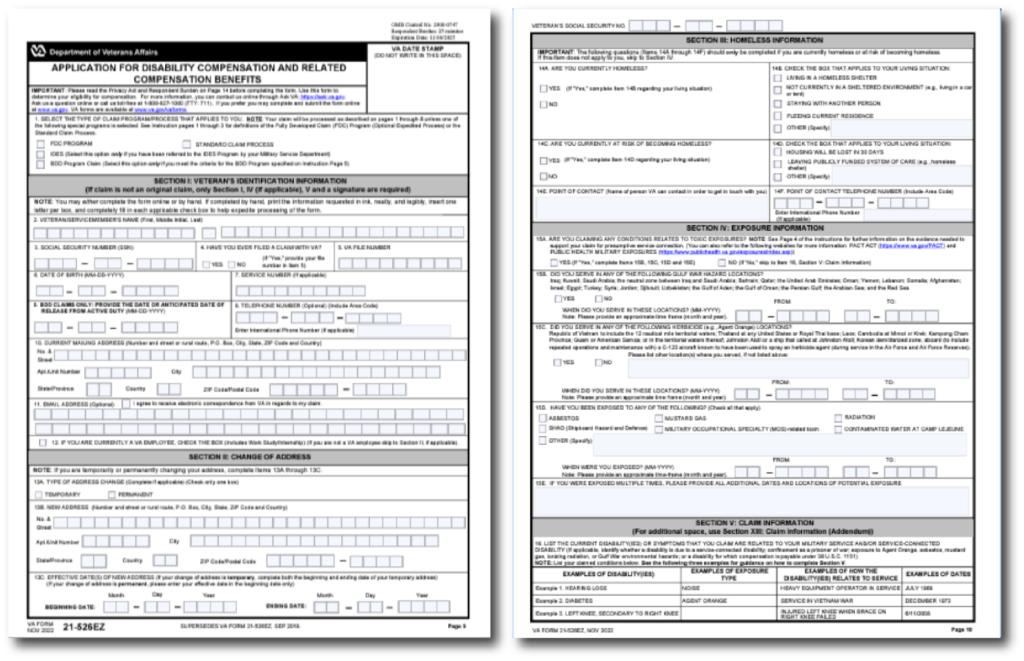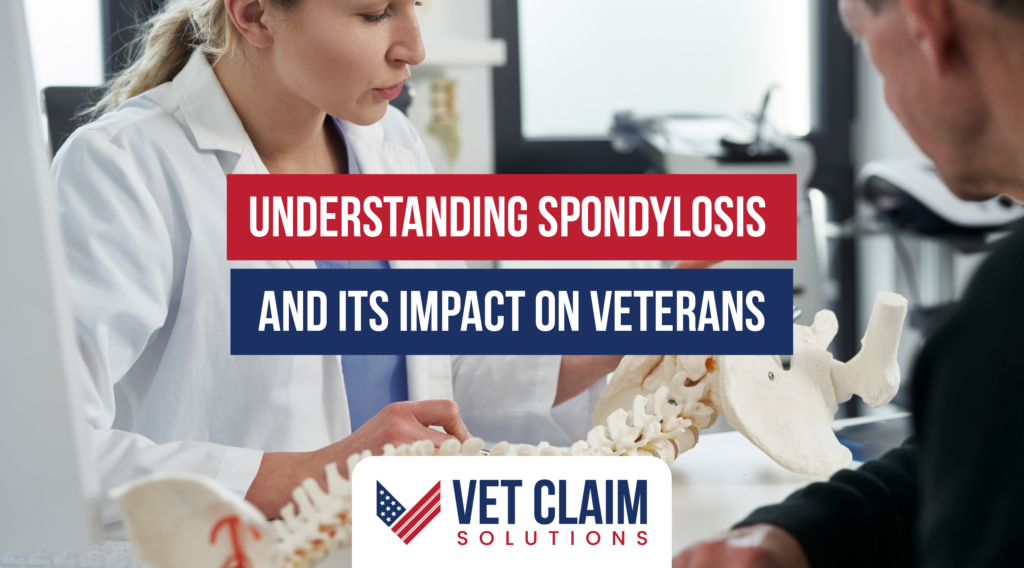You served your country with honor, but dealing with the Department of Veterans Affairs (VA) for disability benefits can feel like another deployment. This is especially true if you’re living with the daily discomfort of spondylosis, a degenerative condition that affects your spine. It’s frustrating when something that causes you so much pain isn’t explicitly listed as a VA disability.
So, where does that leave you when seeking VA Disability Benefits for Spondylosis? Thankfully, the VA does recognize this debilitating condition for what it is — even if it takes a bit of navigation on your part. You deserve clear, easy-to-understand answers about how VA Disability Benefits for Spondylosis work and how you can fight for the support you deserve. We’re going to cover all that here. Let’s break it down together.
Understanding Spondylosis and its Impact on Veterans

Let’s start by defining spondylosis. You may hear doctors use the terms spondylosis and osteoarthritis interchangeably. Spondylosis occurs when the protective discs and joints in your spine wear down over time.
The daily grind of military service—the heavy lifting, awkward positions, long hours—often accelerates this process. What might come gradually for others can hit veterans sooner and harder. This can leave veterans grappling with pain, stiffness, and limited motion.

Pain: Constant aches in your neck or back? You’re not alone. Spondylosis often causes dull, throbbing pain, turning everyday activities into a test of endurance.

Stiffness: Waking up with a spine that feels like it’s made of rusty gears? Yup, that’s spondylosis.

Limited Motion: Finding it hard to twist, bend, or even stand up straight without wincing? Those simple movements you used to take for granted become significant obstacles with spondylosis.
.Sound familiar? Don’t minimize what you’re going through. This isn’t just typical aging; it’s the lasting impact of your service. It’s vital to remember that these symptoms often worsen as time goes on, leading to a whole new set of problems.
Connecting the Dots: Service Connection and Spondylosis
You might wonder how you actually prove this invisible enemy is a direct result of your time in uniform. This is where service connection comes in. The VA requires three essential elements to establish this connection for spondylosis:

- Current Diagnosis: A formal diagnosis from a qualified medical professional confirms you’re dealing with spondylosis and not just regular aches and pains.
- In-Service Event, Injury, or Illness: Were you injured during basic training, experienced a rough landing on a mission, or consistently strained your back during your service? Documentation matters here, so dig through those old medical records and document any relevant incidents.
- Medical Nexus: Think of this as the bridge connecting your spondylosis diagnosis directly to your service. You need solid medical evidence, often a Nexus Letter, showing how the stress and strain of your time in uniform caused or aggravated your spondylosis.
You’ve gotta connect the dots for the VA. By submitting all three elements with VA Form 21-526EZ, you build a solid foundation for your claim.

VA Ratings and Spondylosis: Deciphering the Code
Here’s the good news: you can get a VA disability rating for lumbar spondylosis and cervical spondylosis. However, what will your rating be? And, how are the ratings decided upon?
The VA categorizes spondylosis under general back conditions because it impacts spinal motion. To decipher this, we’ve got to crack the code: 38 CFR 4.71a Schedule of Ratings — the General Rating Formula for Diseases and Injuries of the Spine.

Imagine your C&P examiner using a protractor to measure how far you bend, twist, or extend your spine. The degree of limitation then directly translates into your disability rating, from 0% to 100%. Think of it like this: the more your range of motion is affected, the higher the rating.
Take a look at these examples below:
| Range of Motion Limitation (Forward Flexion) | VA Rating |
| More than 40 degrees | 0% |
| Over 30 to 40 degrees | 10% |
| Over 15 to 30 degrees | 20% |
| Less than or equal to 15 degrees | 30% |
This chart shows a few common ratings but remember every case is different. Your VA rating will depend on many factors. Additional factors—muscle spasms, nerve issues (radiculopathy), how often you’re incapacitated by pain—come into play.
Preparing for Your C&P Exam

Your Compensation & Pension (C&P) exam is a very important part of the VA disability process. Your C&P exam can make or break your claim for VA Disability Benefits for Spondylosis.
You want the examiner to understand what you’re going through, but remaining honest is vital; this isn’t about exaggerating. They will test your range of motion and document visible symptoms of pain during movements.
Remember to explain how spondylosis disrupts your life—daily chores, work, sleep, and social activities. Provide specific examples that paint a realistic picture for the examiner. Be prepared to answer questions honestly about your pain levels.
If bending over to tie your shoes makes you cringe or if lifting groceries has become impossible, say so. Details matter in this evaluation. Remember, this is your opportunity to demonstrate the tangible ways spondylosis has made your life more challenging, physically and even emotionally.
FAQs about VA Disability Benefits for Spondylosis
1. Can I Claim Benefits for Spondylosis Even if It Wasn’t Diagnosed During My Service?
Absolutely. Many veterans don’t experience noticeable symptoms until years after service. The key is gathering sufficient medical evidence linking your current diagnosis to an in-service event or aggravation.
2. What’s the Difference Between Direct Service Connection and Secondary Service Connection?
Think of it like a domino effect. If you have a primary service-connected disability like spondylosis, any additional conditions that arise from that primary condition could qualify as secondary service-connected disabilities.
For instance, if your spondylosis makes walking difficult and causes knee pain requiring a knee brace, this secondary condition (knee pain) may be eligible for a separate rating.
Conclusion
Obtaining VA Disability Benefits for Spondylosis can seem overwhelming but this is your wellbeing we are talking about. Don’t let the process intimidate you. The information in this post empowers you to move forward with confidence and claim the support you deserve. Remember you served your country honorably. Now, it is the country’s turn to serve you.


